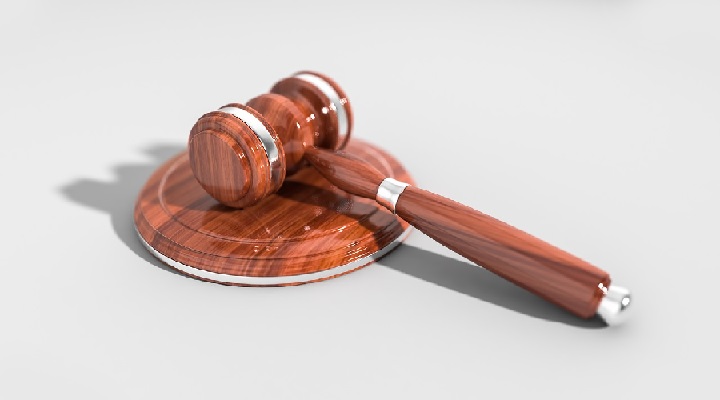Search domain names by holder (“Reverse Whois”)
You can search for domain names belonging to the same owner. This so-called “Reverse Whois” search identifies domain names held by the same owner.
Knowing which sites belong to the same owner is extremely useful. A domain name search by owner (“Reverse Whois”) helps to reconstitute a portfolio during an audit, for example.
In the case of domain name cybersquatting, the cybersquatter’s bad faith is heightened if he has registered other domains using your trademarks or other protected names.
Find the owner of a domain name
Domain name searches by holder (“Reverse Whois”) are based on “whois” data.
When you purchase a domain name from a registrar, you provide several pieces of information about the owner. Name, postal address and e-mail address are all required when registering a domain name.
This information is stored in the databases of domain name registrars such as Gandi.
This “whois” data is very useful for contacting the owner of a domain name in the event of a buyout.
The “whois” allows you to check who owns a domain name.
As part of the General Data Protection Regulation (GDPR), many whois have evolved. Several generic internet extensions such as .COM now deliver less information.
The .FR domain, managed by the French domain name registryAfnic, still offers information on the owner of a domain. It is possible to search for the owner of a .FR name, provided it has been registered by a company. It is also possible to search for the owner of a natural person’s domain name, provided they have agreed to disclose their personal data.

The search for domain names by holder (“reverse whois”) therefore has its limits. Private whois services or domain names registered since the RGPD limit the exhaustiveness of a “reverse whois”.
Finally, if the owner has a widespread surname, there is also a risk of homonymy.
“Reverse Whois: How can I find out who owns one or more domain names?
The “whois” of a domain name contains several pieces of information about its owner.
Note that the most useful data are the “Registrant Organization”, “Registrant Name” and “Registrant Email” fields.
In fact, the name of the owner entity, any first name and contact name within the organization, and the email address used when registering the name, enable an efficient “Reverse Whois”.
Don’t forget that the Registrant Organization search must be broad. In other words, the “Reverse Whois” will query all domain names containing the registrant’s simple name, in order to be as exhaustive as possible.
A search by holder will reveal domain names registered with the company name associated with other terms.
Take, for example, a domain name associating the company name with a legal form such as SA, SARL, LTD or BV.
In this spirit, the broad container search also detects the company name associated with a country. Admittedly, this is useful for finding deposits made by subsidiaries in other countries.
Searching by registrant based on “email registrant” works in the same way as searching by “Registrant Organization”. The broad query ” @nomsdomaine.fr ” identifies all the people in the company who have registered a domain name using the company’s e-mail address.
Proving the bad faith of a domain name cybersquatter
In the event of cybersquatting, it is advisable to carry out a reverse whois search of other domain names held by the owner. This often proves the owner’s bad faith.
In March 2020, the social network Instagram recovered its identically squatted .CC domain name in an out-of-court procedure. The holder was in possession of other names featuring trademarks registered with the Institut national de la propriété industrielle(INPI), such as Accor, Facebook and Starbucks.
The registration of other domain names featuring well-known trademarks by the same cybersquatter betrays his bad faith.
In a UDRP dispute, Volkswagen revealed that the holder of the disputed address had also registered domain names containing Exxon, Hewlett-Packard, Michelin and Samsung.
The typosquatting of domain names is also considered bad faith. SkyScanner, a flight comparison service, won a Parl Expert ruling from Afnic for a typosquatted name. The registrant had other typosquatting rights targeting well-known brands such as Europcar, Intimissimi and Lufthansa.

Some cybersquatters specialize in speculative registrations. They register branded domain names in the hope of reselling them at a higher price to their targets.
A private individual offered the Mozilla Foundation $10,000 to buy back the domain name <firefox.lol>. The Internet browser disagreed, and easily won its out-of-court proceedings. The defendant’s bad faith is accentuated by the fact that he also owns the .LOL domain names of other major brands. Adobe, Audi, Burberry, Ferrari, Hsbc, Gucci, Ikea, Pizza Hut and Zara have all fallen victim to this cybersquatter specializing in the .LOL NewgTLD.
To take another example of speculative registration, the owner of a domain name containing Amazon approached Jeff Bezos, its CEO, directly. The brand did not buy back the disputed domain name. The cybersquatter also owns other domain names containing Apple, Coca Cola, Emirates, Intercontinental and Samsung. These addresses confirm the cybersquatter’s bad faith.
In May 2020, Italian fashion brand Versace recovered a disputed domain name associating it with shop under the UDRP. The domain name was offered for sale between 1,500 and 5,000 euros by its owner. The bad faith of this speculative filing is reinforced by the fact that the owner holds other brand names such as Bosh, Converse or Ebay.
Consolidation of a UDRP procedure to recover several cybersquatted domain names
The “UDRP” makes it possible to initiate a single out-of-court procedure for several disputed domain names. The World Intellectual Property Organization(WIPO) requires the defendant to prove that the domain names belong to the same network.
The domain name search by registrant identifies other domain names to be included in the UDRP procedure.
Italian lingerie and swimwear group Calzedonia consolidated a “UDRP” in April 2020. In an out-of-court procedure, it recovered 10 domain names squatting on several of its trademarks, such as Intimissimi, Signorvino or Calzedonia, held by the same holder.
The “Registrant Organization” and “Registrant Email” fields are criteria recognized in case law for consolidating a UDRP complaint.
Other grounds for consolidating a UDRP include the registrar used. In addition, existing web redirects or a website’s content management system (CMS) are also eligible.
In February 2020, an online casino and betting company recovered 496 cybersquatted domain names in a single UDRP procedure.
In conclusion, don’t forget that a “Reverse Whois” is a search at a precise moment in time. A “Registrant Alert ” completes the search for new registrations.